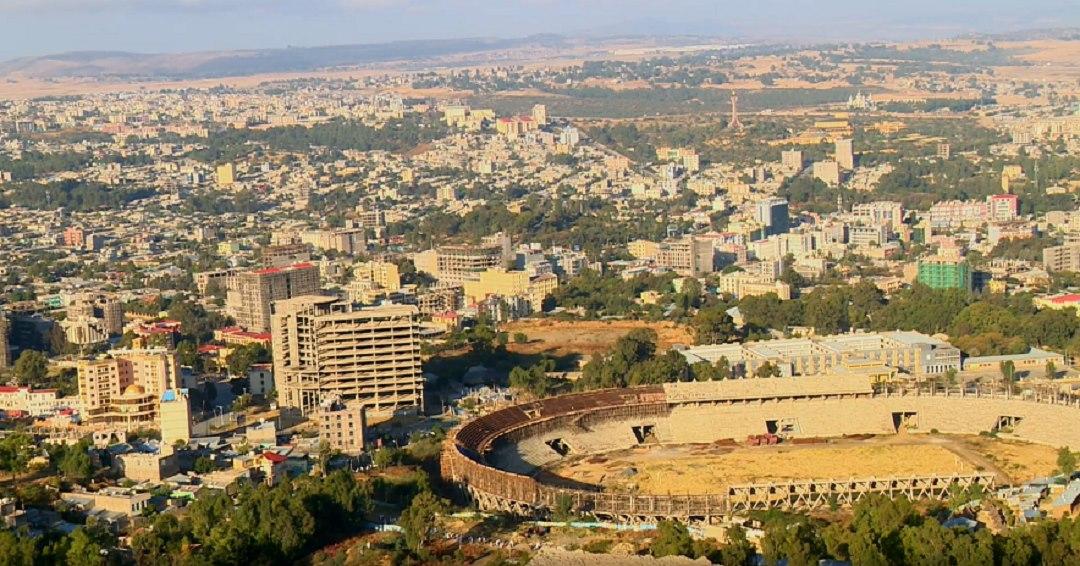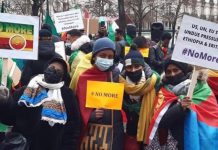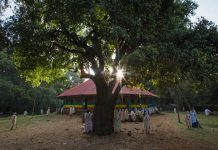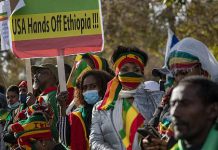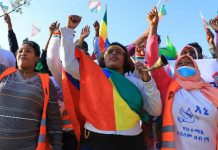Africa-Press Ethiopia
espite a long history of statehood, the nation-building project of Ethiopia, a multilingual polity, remains incomplete. Successive regimes have failed to create a feeling of national unity and a culture of citizenship that is based on a common sense of belonging.
Over the course of nation-building of this multilingual polity and consolidation of state power, the political and cultural hegemony of one group, the Amhara, was established, to the exclusion of Ethiopia’s other ethnolinguistic communities. This created resistance among groups that experienced marginalization or feared assimilation of their identities into the dominant culture.
In 1991, ethnofederalism was embraced to address the hegemonic threat posed by the predominance of the Amharic language and northern cultural traditions. While three decades later, major ethnic groups run semi-autonomous regional states—with their own flags, constitutions, parliaments, courts, and police—these new structures have in turn caused new and complex challenges.
These challenges must be urgently addressed before causing even more chaos.
As Habtamu Alebachew, an academic, author, and analyst, points out: “the ethnolinguistic-federalism that was taken as a pill to cure an illness might end up poisoning it to kill“[1]. The core problem is that the formerly exclusive and oppressive nationalism was countered with multiple competing ethno-nationalisms, creating a system that is proving at least as dangerous and destabilizing.
Some proponents of the ethnofederal system make it sound as if addressing our structural problems is a binary choice between reverting to the past unitary system or retaining the present ethnofederalism. But this is simply not the case. While such a limited discourse has discouraged critical voices, a far more creative approach is now necessary and urgent.
As a close observer of Ethiopian politics, and an advocate for justice and diversity, I strongly believe Ethiopia’s experiment with ethnofederalism has led the country into an existential crisis.[2] Therefore, this is the right time to start a conversation on how to restructure the federation to create more inclusiveness and liberty—rather than locking ethnic groups into territories and so fostering antagonistic, exclusionary relationships.
What’s at stake?
Since the establishment of ethnofederalism in Ethiopia in the 1990s, ethnic tensions and conflicts have become institutionalized and the struggle for hegemony by the major groups further undermined minority protection. Meanwhile, in most regional administrations, minorities continue to be disempowered, whereas in others majorities turned to be political minorities, meaning citizens’ sense of belonging has been ‘ethnicized’ and ‘regionalized’. This has led to the diminishment of national identity. Moreover, centralization that was problematic at the country level has now become a phenomenon in the regional states with power concentrated in the capital.
Unlike the promise in the preamble of the federal constitution to “further promote our shared interests” and “creating a political community”, the demarcation between regional states, ethnic zones, and special weredas have segregated people by containing ethnic groups inside fixed administrative territories. This ethnofederalism, if it continues to undermine the central state, rather than improving the lives and relationships of the citizens in it, will fail as a political arrangement and so hasten its own demise.
The journey that started half a century ago with the ‘nationalities question’, and intended to make Ethiopia inclusive for all, is off track. It is wrongheaded to expect Ethiopians to watch this process and do nothing about the country’s disintegration caused by the very member states created to improve governance, belonging, and representation.
Therefore, it is a necessity to implement a well-defined, fully debated, all-inclusive revised federal system to hold the country together and to help citizens enjoy the maximum possible freedom.
One of the major problems with the current ethnofederalism is that it is based on a reductionist view of identity and a simplistic understanding of the historical relationship of Ethiopians. The proposed framework was supposed to solve perceived and real ethnic repression through ethno nationalism. However, the approach failed to sufficiently acknowledge that not all challenges of Ethiopia originate from ethnicity and that a system to remedy problems should offer a more comprehensive and inclusive approach.
Here are six of the key weaknesses of the system followed by a few suggested remedies.
Regionalizing local conflicts
Conflicts among neighboring groups over resources such as water and grazing land have long existed in Ethiopia. Institutionalizing ethnicity through ethnofederalism has, however, taken such conflicts to the next level. A case in point was the displacement of Oromo and Somali from their respective regions in 2017. The Borena clan of Oromo and Garre of Somali are neighboring residents who have had a long history of conflicts over resources.[3] But the level of the conflicts increased under federalism because of the media, public and private, backed ethnicization of the clashes. This caused the displacement of 242,600 ethnic Somali from Oromia and 136,400 ethnic Oromo from Somali.[4]
The conflict was ignited by media campaigns of regional ethno-nationalist actors, and officials of each region were involved in fanning the flames and blaming each other.[5] Moreover, Oromo living in Jigjiga, capital of Somali region 500 kilometer away from the conflict area, and not even members of the clans involved in the clash were displaced too by Somali Special Police. Following the displacement and alleged killing of Oromos in Jigjiga, at least 18 people (of whom 12 ethnic Somalis, and the rest Jarso, considered to be ‘Somalized Oromo’, were slain by Oromo groups in Aweday.
This is a showcase of how localized tribal clashes become regionalized because of institutionalized ethnicity. This case is far from the only one Ethiopia has known in the past years. Researcher Jon Abbink counted from 5,000-6,000 people killed after ”ethnic” and ”border” conflicts within 20 years since the introduction of ethnofederalism.[6]
At some point in 2018, there were three million Ethiopians displaced internally after ethnic conflicts in all regions; the total count is bigger than the total population of the four least populated regional states in the country. Studies show that inter-ethnic local conflicts have increased since the introduction of the federalism because of the superiority of ethno-cultural groups in a territory will result in more power for the members[7]. As Crisis Group noted over a decade ago, the ethnofederalism system “has not dampened conflict, but rather increased competition among groups that vie over land and natural resources, as well as administrative boundaries and government budgets. Furthermore, ethnic federalism has failed to resolve the ‘national question’”.[8]
Figure: The Moving Average Trend for the frequency of ethnic conflicts in Ethiopia 1991-2016 (Zerihun & Samuel, 2019).[9]
Ethnofederalism was supposed to defuse conflicts by localizing and containing them in small areas as opposed to regionalizing them.
Hegemonic asymmetry
One of the troubling effects of the Ethiopian federation is the asymmetrical relationship between the member states and the deadly struggles to maintain hegemony by their ethnonational representatives.
The purpose of self-administration is protecting minority groups from marginalization and oppression. However, Ethiopia’s federation has created competition between major groups, so compromising the security of minorities.
The two most-populated regional states constitute more than 60 percent of the entire population and dominate the House of People’s representatives (HoPR). Similarly, in the House of Federation (HoF), groups from Oromia, Amhara and Southern Nations Nationalities and Peoples Regional State (SNNPRS) have more than 75 percent of the seats. This allows two, or three regional states to dominate without involving other regions. This can lead to the tyranny of the majority.
As the role of the HoF is limited mainly to interpreting the constitution, as compared to HoPR, a legislative body, the opportunity for political hegemony is mostly in the hands of Oromia and Amhara. If the two fail to agree, then they can destabilize the country in the struggle for hegemony.
It is worth imagining how unfair a bargain could turn out on a federal matter between Oromia and Harari regions. Oromia, which geographically surrounds Harari, is 858 times bigger than the latter. It is also 142 times bigger than Harari in population size.
The Ethiopian Peoples’ Revolutionary Democracy Front (EPRDF) controlled the federal government for 23 years following the establishment of the federation. The Front was a coalition of four parties representing Oromia, Amhara, SNNPRS, and Tigray. It was a coalition led by people who designed the constitution and the federal arrangement.
It created a status quo that allowed these four regions to decide and enforce rules on the other regions. The other five were led by what is referred to as ‘partner’ parties; almost always following the decisions made by the EPRDF. This institutionalized in a new federal setting the traditional center-to-periphery relations of dominance and discrimination.
The Tigray Peoples’ Liberation Front (TPLF) is the oldest and most powerful group in the EPRDF, representing Tigray, which constitutes around six percent of Ethiopia’s population. The late leader of TPLF/EPRDF, Meles Zenawi, once said that “Revolutionary Democracy, the ideology of the ruling Front, is not compatible to pastoralist lifestyles” in explaining why ruling parties of five other regions did not join the coalition.
Years later, the TPLF has become the final victim of the center-to-periphery relationship it has dictated institutionally in the previous decades. The political transition from TPLF-influenced EPRDF to the Oromo-influenced Prosperity Party (PP) in 2018 was, for example, a work of cooperation between the ruling EPRDF parties in Oromia and Amhara. The cooperation emerged from within the EPRDF and referred to as ‘Oromara’.[10] TPLF, unable to accept marginalization and peripheralization in the system it once dominated conceptually and practically, eventually embraced a violent confrontation with the PP-run federal government in November.
Besides the Oromia and Amhara forces’ cooperation overshadowing the rest, there is and always will be a battle between themselves for hegemony in the federal government. Driven by ethno-nationalism, Oromo and Amhara politicians have been sabotaging one another and using the rest of the regions as allies for the battle at the center.
“As pointed out by Christopher Clapham, in the absence of the overarching control of the EPRDF, Ethiopian federalism could lead to unstable bipolarity between the two largest regions, Oromia and Amhara.”[11] As predicted by Clapham, the worst political violence that ranged from the assassination of regional leaders to attack against minority groups happened in the two regions.
This will be a challenge for a stable political settlement in the country for a long time. A case in point is the media battle between Amhara and Oromia officials on the fate of Welkait—whose administration within Tigray was contested by Amhara nationalist—that followed the ouster of Tigray’s government and de facto Amhara occupation of the area.
The two had a common mission until the operation ended. Following that, Amhara officials claimed regaining territories “forcefully taken” by TPLF; and Oromo officials raised the agenda of Raya, claiming that if historical territory is the issue, then Wollo, an area in Amhara and historic province, belongs to Oromia.
Nativism and othering
Many of the communal conflicts in Ethiopia emerge from the nativist point of view, where the ‘natives’ try to forcefully expel ‘settlers’ from what they believe is their own territory. The conception of the federal constitution has ‘nativism’ at its core. The preamble states that the Nations, Nationalities, and Peoples (NNPs) of Ethiopia have their own historical background and geographical settlement. This gives room for the ‘native vs settler’ divide and constitutions of regional states have manifested it to discriminate against ‘non-natives’.
The Harari constitution is the best example of ‘regional nativism’. The regional administration has two councils where the upper house has only Harari ethnic as members (only 9 percent of the total population in the region) and this council has the supreme power to make major decisions like nominating the regional president or even seceding from the federation. This has installed minority rule over the majority based on nativism.[12]
Harari’s constitution is not really an exception. It is unique only because the ‘natives’ of the regional state are a minority and the provision is extended to assure their ownership of the state. Other constitutions of regional states have similar provisions.
Benishangul-Gumuz, for example. Article 2 of its constitution, in a provision titled “Ownership of the Regional State”, reads “though other residents of the regional state are recognized, the owner nations and nationalities of the region are Berta, Gumuz, Shinasha, Mao, and Komo”.
The non-natives (thereby non-owners) are about 43 percent of the total population in the region. Amhara and Oromo are the second- and fourth-largest groups in the region. Right now, the region is a place where communal violence is a common phenomenon, according to an academic study, and one of the major causes is the othering of ‘non-natives’.[13]
The preamble of Ethiopia’s constitution begins with “We the Nations, Nationalities, and Peoples…” unlike many other constitutions that begin with “We the people…”. This has been criticized for leaving room for divisions, and undermining individual freedoms for a certain collective identity. Similarly, constitution of Oromia begins with “We the Oromo people…” instead of ‘we the People of Oromia’.
Furthermore, Article 8 of Oromia’s constitution reads – “…the supreme power of the national regional state belongs to the people of Oromo”. Not to all the people of Oromia. However, the same provision also assures that the supreme power is exercised through voting. One can argue that voting is individual and non-Oromo residents are not denied their rights. However, the failure to acknowledge these residents, again, leaves room for mistreatment of ‘the rest’.
According to the 2007 census, 12 percent of Oromia’s population (~3.3 million) was non-Oromo. This number topped the combined populations of the four smallest states. These minority groups in Oromia, however, are not given a chance of self-administration (note that Oromia has no special zone or wereda), nor, in practice, representation in the councils of the region and the federation. Rather, they experience alienation, if not violence, stemming from nativist attitudes.
Fighters for collective rights in Ethiopia often argue that ‘Ethiopia is a prison of NNPs’. On the surface, ethnofederalism seems to have answered this question by empowering ethnic groups. “Paradoxically, ethnic federalism both empowered and disempowered ethnic groups in Ethiopia,” says Semir Yusuf (Ph.D.), a renowned analyst of Ethiopian politics in an essay he wrote about ethnic violence that followed the reform in 2018. The ethnofederalist arrangement has “created a sharp division between ‘natives’ (and thus ‘owners’ of regions) and ‘settlers” disempowering ethnic groups.[14]
Confirming Semir’s point, researcher Lovise Aalen holds that, as an unintended consequence, ‘it has led to ‘ethnicization’ of local socioeconomic disputes and to sharper inter-ethnic and intra-ethnic divides, often to the disadvantage of historically marginalized groups’.[15] Consequently, we can conclude that states have become prisons of ethnic groups and require that some correction has to be taken.
- Incompatibility with diverse settlements
One of the major failures of Ethiopia’s federation is the fact that it does not recognize non-territorial diversity, where diverse groups settle in a specific territory, as much as it determines all its focus on territorial diversity, where homogeneous communities settled in a territory. To manage diversity, ethnofederalism includes provision for ‘zones’ for nationalities and ‘liyu’ (special) weredas’, which is not compatible with non-territorial diverse settlements.
“Addis Ababa cannot be entitled to self-determination because it is not a nation” these are the words of Bekele Gerba, deputy chair of Oromo Federalist Congress when he was interviewed together with Eskinder Nega on Nahoo TV[16]. And, his conclusion is the conclusion of many supporters of the ethnofederalist system.
Addis Ababa is a seat for both the federal and Oromia governments. Even though it has more than six million people, it doesn’t have any representation in the upper house. The residents of Addis Ababa are of diverse ethnicity, and a significant portion of them are mixed ethnically. However, the House of Federation (HoF) has representatives from all NNPs directly nominated by regional state councils only. Addis Ababa is therefore expected to be represented at the HoF by ethnic nominees of states whom the residents have not voted for.
Perceptions and practices of the federation have so far proven that any political entities that are not composed of homogeneous NNPs (the definition is not really different from ethnic groups) are not entitled to self-administration.
Expanding urbanization is almost inevitable everywhere due to economic demands. The administrations of such mixed groups, therefore, should recognize that ethnicity is not the primary element of focus. Instead, the intra-EPRDF power-sharing deals for Harar and Dire Dawa cities, for example, are insufficiently democratic and are not compatible with the territorial self-governance model of ethnofederalism.[17]
In both cases, the dominant party, EPRDF, and its ‘partner’ parties from Harari and Somali dealt to divide councils of Harari and Dire Dawa. These intra-party and quota-based power-sharing deals are known as ‘50-50’ between Oromo group and Harari group, in the case of Harari, and ‘40-40-20’ between Oromo, Somali, and the rest, respectively, in the case of Dire Dawa. This kind of arrangement cannot be applicable where elections are democratic and the parties who will be in charge are not predictable.
Oromia, 12 percent of whose population is non-Oromo, has neither nationalities zones nor special weredas for them. Other than non-Oromo individuals getting elected to the regional and local councils, it is unclear how minority groups dispersed across the region can be represented.
Non-territorial diverse communities have many things that unite them more than ethnolinguistic identity. “Ethnic federalism as an institutional set-up privileges ethnicity as one marker of identity over many others (economic, citizenship, occupation, religion, class, or gender) and, in a sense, freezes this one marker of identity or rather encourages people to identify in ethnic terms. But in many contexts, the other ways of identifying are as important, and sometimes more so.”[18]
This incompatibility with management of diverse settlements is against liberal democratic values in that its focus is concentrated on collective rights than individual rights because it was crafted based on Leninist, Stalinist and Maoist ideology and disciplines[19], and is hostile to the common understanding of inclusion. Diverse communities in a single territory should also have a systematic way of self-representation, unlike the current system which gives collective representation only for territorially concentrated groups.
- Administrative challenges
The horizontal asymmetry in population size and geographical territory created not only a big divide between the member states but also difficulties for administration. One of the fundamental functions of a federal systems is decentralization to empower local communities and to enable good governance.
Yet, regions like Oromia and Amhara are too big to practice functional decentralization. The demarcation of the federalism should have put this in consideration during crafting as one of the purposes of federalism is decentralization to enable good governance.
In a country where transport and communication are poor, most people’s access to their respective regional capitals, where many public services are delivered, is limited. On the other hand, some of the regions are too small to ensure economic competitiveness.[20] Besides, administrative demarcation based on ethnolinguistic framing doesn’t address all the demands of each of the members of a respective group.
Every community has extra-ethnic relations and identities based on class, gender, religious views, and other determinants. Ethno-linguistic homogenization of people lacks intersectionality, hampers a clearer understanding of social relations, and leads to new injustices.[21] Ethnicity intersects with other social factors and attributes and marginalized groups and minorities, such as the poor, women, and people with disabilities experience exclusion more than the non-marginalized groups within their ethnicity. Further decentralization helps to shift the focus of administration to diverse issues enabling to address specific challenges of each of the members of administrative districts.
Violence against non-Oromo and Oromo in Oromia following the assassination of the famous musician Hachalu Hundessa testified to the consequence of ignoring asymmetry within one group. Some members of the Oromo ethnicity have been victims on the basis of differences in religious views, proving ethnic homogenization of Oromia did not help to protect religious minorities of Oromos in some parts of the region.
Further breaking up of big states—through participatory referendums and making necessary adjustments to small states by merging them with adjoined areas that have common social and economic behavior—would alleviate administrative and logistic issues and promote the viability of peripheralized regions.
- Institutionalization of ethnicity
The other challenge ethnofederalism has posed in Ethiopia is ethnicization of every aspect of social life. The ethnicization includes everything from entertainment to business, regardless of other characteristics and common needs of society. In today’s Ethiopia, power and resources are accessible mainly through ethnicity.
A quantitative analysis conducted in the town of Shashemene in Oromia pointed out that “ethnicity has been an important variable that influences customers’ selection of a given bank”.[22] This is obvious for anyone who knows the banking industry. The ascension to higher ranks for employees of banks is highly determined by ethnicity. On the other hand, the entertainment industry, such as football, is time and again divided by ethnic lines and conflicts often involve ethnicity. Ethiopian premier league was suspended by the Ethiopia Football Federation in 2019[23] due to ethnically motivated clashes between fans from Amhara and Tigray’s clubs.
The ethnicization of media outlets is another example of the institutionalization of ethnicity. State- and diaspora-funded ethnic satellite TV channels have become platforms for ethno-nationalist radicalism and violent extremism to flourish.[24] Oromo Media Network’s role during the angry protests of post-Hachalu Assassination is a showcase.
The academic year 2019/20, experienced wave of university students’ conflicts. The first killing happened in Woldiya University, Amhara region. The two students killed there in November were Oromos. The reports followed this tragic incident were provoking further violence. In the following one month, 16 universities experienced violence in direct relation to the Woldiya University incident. Throughout the academic year, 12 students were killed and more than 58 were injured.
The ethnic media reporting covering the violence led to pointing fingers at one another, blaming each other for either orchestrating ethnic-based attacks or politicizing the incident. Instead of presenting objective and fact-based reporting, no media has yet confirmed what caused the conflict and led to the killing of the two students and the other ten that followed.[25]
A study of 10 media outlets on eight cases has revealed where media outlets dis/favor one group over the other: “From the 133 stories [analyzed], 109 were purely reported to expose how others attempt to attack their own group either physically or politically”.[26]
Sports, banking, and media are examples of major components of society that dictate the way of urban life. Urban social life, on the other hand, requires the harmonious co-existence of people from different ethnic and religious backgrounds among other things. Ethnicization of these sectors creates divides among people in contrary to the sacred promise of “creating one economic polity” in the constitution.
Restructuring need
The ethnofederalism structure of Ethiopia did not only give answers to old questions but also created new questions in the social, political, and economical lives of Ethiopians. In the spirit that everything should be challenged in order to improve it and act against complacency or decay, the ethnofederalism arrangement of Ethiopia should also be renegotiated.
Even though ethnofederalism was meant as a solution to ensure inclusion, diversity, and liberty of people in Ethiopia, it led to the ethnicization of states. One might therefore believe that de-ethnicization of the regional states can easily fix most of the shortcomings of the ethnofederalism. However, the failure is deeply rooted in the very essence of the federal structure. For that matter, de-ethnicization would not be fully realized without a restructuring of the arrangement.
As Gebreab Bernabas (Ph.D.), former Minister of State at the Ministry of Federal Affairs, eloquently put it, the problem is in the “inherent feature of the federal system”[27]. To try to de-ethnicize the regional states is to go against the essence of the constitution and federal system. Therefore, it needs major reform starting from the constitutional way of understanding the different entities and how they interact.
The rationale that justified ethnofederalism is a Stalinist definition of nations, and Leninist conclusion that “a free union is a false phrase without the right to secede”. This conception has made regional governments build states in a way that prepares them to leave the federation eventually, not to build a common economy and political community as promised in the constitution’s preamble.
What to do?
Ethno-nationalist groups are extremely enthusiastic about the ethnofederalist system even though they know that it is incompatible, at least in practice, with liberal democracy; in that it doesn’t entertain non-territorial diversity, group rights override individual rights, and it has posed many challenges to peace and security. Therefore, there will be huge resistance against any reform and breaking off and merging regional states to let them have symmetrical power relations. Nonetheless, the concerns and voices of non-ethno-nationalist groups and justice enthusiasts are equally important.
To avoid violent conflict and to address everyone’s concerns and reach consensus, as part of the often discussed National Dialogue there needs to be thorough participatory debates and eventually compromises on all sides before restructuring.
Here are my recommendations for steps to be taken:
Deconstruction
De-politicization/de-ethnicization of languages: the rights to use and promote native languages are the nuclear agenda of the ethnofederalist system. However, there is no language policy under implementation. Language policies that de-ethnicize the role of languages should be put in place and the federal and regional states should have more than one working language based on the number of speakers in different localities and regionally. This should be inserted in the education policy to promote multilingualism and build opportunities of cross-cultural interactions.
De-ethnicization of states: the regional states cater to those who benefit from dominant ethnic settlements and often consider the ‘other’ settlers or non-owners to be entitled to fewer rights and belonging. This should legally and politically (in practice) be reversed and states should give equal rights and opportunities to all their legal residents. The preambles and provisions of regional constitutions should be reformed so they do not favor or disfavor anyone based on ethnic origins.
Dividing states: Some states (such as Oromia, Amhara, and Somali) are too big to meaningfully decentralize power to local communities. They should be regionally restructured and divided into clusters that may be led by vice presidents, maybe. Those clusters should establish their administrative councils under the regional states with the reconsideration of administrative, logistics, linguistic, geographical accessibility and settlement, and others.
Constitutional Amendments
Governmental system reform (to Presidential): the parliamentary system has been used (and will have a chance to be used in the future, too) as an instrument by a dominant political party (as EPRDF and might be the case for Prosperity Party in the future) to repress public questions and go against public interests A well-checked presidential system would help de-ethnicize political competition and gives a chance for regional presidents and city mayors directly elected by residents. The opportunity of directly electing leaders would force contestants to win the votes of more than one ethnic groups for the presidency of Ethiopia and regional states as well as mayors of urban areas where non-territorial diverse settlement is the issue.
Electoral System Reform (to PR): First Past The Post (FPTP) is known to waste votes in divided political communities. Proportional Representation (PR), on the other hand, values all votes and makes parliaments real representatives of voters. This gives a chance for minorities to have a voice in decision-making councils.
Restructuring the federation: Too big and too small regions have an asymmetrical relationship, leading for some to be hegemonic while others are marginalized. This can be fixed by restructuring the federal arrangement so that the member states have a horizontally symmetrical relationship in federal affairs. This includes maybe breaking up of the bigger ones and/or merging the smaller ones with adjoined areas based on multiple factors of consideration starting from settlement, ethnolinguistic realities, economic viability and others.
Installing Alternative Minority Protection System: restructuring the federal arrangement and democratizing its implementation may still threaten minority groups and led to marginalization and assimilation. To prevent this, federally or regionally incentivized mechanisms of protecting cultural minorities should be legally placed. This might include having a federal council of minority groups to give them collective bargaining power at the center.
Ethiopia’s problems cannot be traced to a single source. Therefore, every alternative proposal may have its pros and cons. This proposal admits previous and current problems and the fact that this analysis, as well as alternative proposals, fall short of including many issues. I propose the above, considering the specific and big challenge posed by the ethnofederalism structure and hoping to trigger fruitful and continuous conversation for progress. I want to also remind readers that the failure of the ethnofederalism system should not be a pretext for undermining the contributions of the system in raising consciousness about the ‘nationalities question’ or underplaying the previous systems’ coercive assimilationist tendencies.

